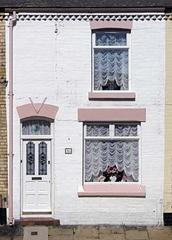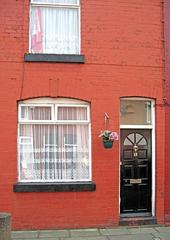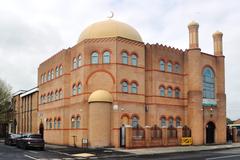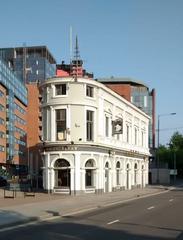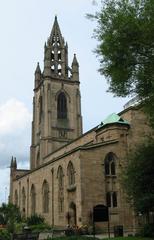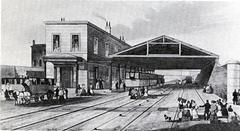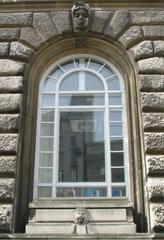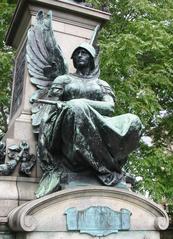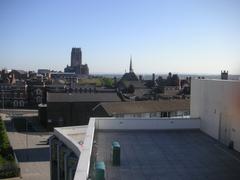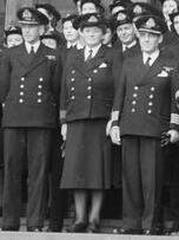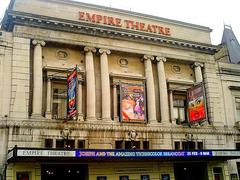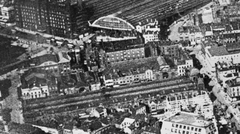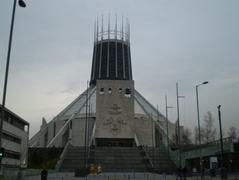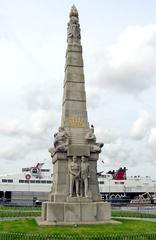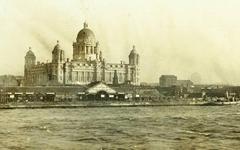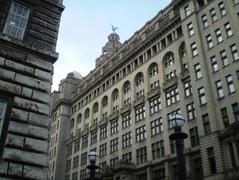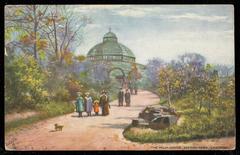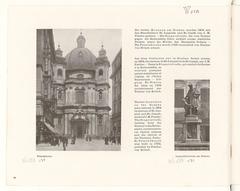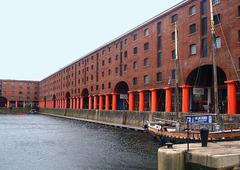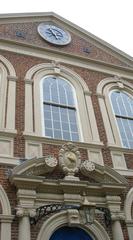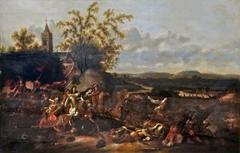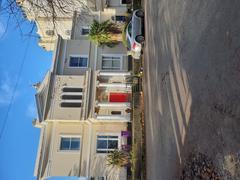Knolle Park Saint Gabriel’s Convent Liverpool: Visiting Hours, Tickets, and Comprehensive Guide
Date: 14/06/2025
Introduction
Knolle Park, also known as Saint Gabriel’s Convent, is a landmark within Liverpool’s architectural and social landscape. With origins as a Georgian manor (1828), it later became a Catholic convent and children’s home, reflecting the city’s growth during the industrial era and the pivotal role of religious institutions in education and social care (Historic England; Liverpool City Council). The site is renowned for its early 20th-century Gothic Revival architecture, characterized by pointed arches, lancet windows, and intricate stained glass (Historic England).
Over time, Knolle Park has served as a sanctuary during global conflicts and a center for social support, but its legacy is also marked by tragedy, including well-documented incidents of institutional abuse (BBC News). Today, as a Grade II listed building facing conservation challenges, the convent stands as a testament to Liverpool’s resilience, heritage, and the evolving dialogue around adaptive reuse and remembrance. While public access is currently restricted due to safety concerns, the site continues to inspire interest among historians, heritage advocates, and the wider community (Visit Liverpool).
This guide provides a detailed overview of Knolle Park and Saint Gabriel’s Convent—exploring its history, architectural highlights, cultural impact, current condition, and practical information for those interested in Liverpool’s historic sites.
Table of Contents
- Introduction
- Origins and Early Development
- Architectural Features
- Historical and Cultural Significance
- Heritage Preservation and Conservation Status
- Adaptive Reuse and Community Engagement
- Visitor Information
- Special Events and Nearby Attractions
- Visitor Experience and Interpretation
- Architectural Context within Liverpool
- Practical Conservation Challenges
- Recent and Proposed Development Plans
- Current Physical Condition and Accessibility
- Social Impact and Community Memory
- Urban Exploration and Cultural Fascination
- Frequently Asked Questions (FAQs)
- Conclusion
- Related Articles and Further Reading
Origins and Early Development
Saint Gabriel’s Convent was established in the early 20th century by the Sisters of Saint Joseph of Peace, a Catholic order founded in 1884 by Margaret Anna Cusack (Catholic Encyclopedia). The convent’s core mission—education, healthcare, and social outreach—was central to Liverpool’s expanding community during the city’s industrial boom. The main building, completed around 1908, was constructed on the city’s then-rural outskirts, now part of the vibrant Wavertree district (Historic England).
Architectural Features
Gothic Revival Style
The architecture of Saint Gabriel’s Convent exemplifies early 20th-century Gothic Revival, featuring red brick, stone dressings, steeply pitched roofs, and pointed arch windows (Liverpool City Council Conservation Areas). The façade is adorned with stone tracery, buttresses, and decorative finials, while the chapel—an architectural highlight—boasts lancet windows with stained glass, vaulted ceilings, and a modest bellcote.
Chapel and Stained Glass
The chapel’s stained glass windows, created by prominent local studios, depict scenes from the life of Saint Gabriel and other biblical narratives, blending artistry with historical narrative (Stained Glass in Liverpool).
Cloisters and Courtyards
Cloistered walkways and enclosed courtyards evoke monastic tranquility, providing contemplative spaces for residents.
Ancillary Buildings
The site also includes a historic schoolhouse, laundry, and infirmary—integral to understanding daily convent life, many with original features such as sash windows and decorative brickwork.
Historical and Cultural Significance
Knolle Park and Saint Gabriel’s Convent played a vital role in Liverpool’s social fabric, particularly for working-class families and girls facing educational barriers (Liverpool Catholic Archdiocese). The convent was a sanctuary during the World Wars and a center for community support. Its complex legacy includes the difficult history of abuse scandals, which has shaped ongoing conversations about institutional accountability (BBC News).
Heritage Preservation and Conservation Status
As a locally listed and Grade II listed heritage asset, the convent is recognized for its architectural and historic value (Historic England). Conservation efforts focus on preserving the building’s integrity, restoring original features, and ensuring any adaptations are sensitive to its history. The parkland setting, with mature trees and formal gardens, enhances the site’s heritage value.
Adaptive Reuse and Community Engagement
Following a decline in religious vocations, parts of the convent have been adapted for community uses such as educational programs, cultural events, and social services (Liverpool Echo). Community engagement initiatives—including heritage tours and workshops—raise awareness of the site’s significance and encourage responsible stewardship.
Visitor Information
Visiting Hours
As of June 2025, Knolle Park and Saint Gabriel’s Convent are closed to the public due to safety concerns and structural deterioration. There are no public visiting hours or tours available (BBC News; Liverpool Echo).
Tickets and Admission
No ticket sales are available as entry is prohibited. Viewing is limited to the exterior from public roads.
Accessibility
The area around Woolton and Wavertree is accessible by public transport and car. The site itself is unsafe and not accessible.
Getting There
The site is visible from Beaconsfield Road, Woolton, with nearby parking and public transport options.
Photography Guidelines
Photography is permitted from public roads. Do not attempt to enter the property for safety and legal reasons.
Special Events and Nearby Attractions
While the convent itself is closed, Liverpool offers a wealth of accessible historic sites:
- Woolton Village: Shops, cafes, St. Peter’s Church
- Calderstones Park: Gardens, lake, historic mansion
- Liverpool Cathedral, Albert Dock, Museum of Liverpool: Major city landmarks (Visit Liverpool)
Occasionally, heritage organizations may host events related to Liverpool’s religious and social history—check local listings for updates.
Visitor Experience and Interpretation
Interpretive signage and digital resources (such as the Audiala app) offer historical context for those viewing the site from the exterior. Official virtual tours or on-site interpretation are not currently available.
Architectural Context within Liverpool
Saint Gabriel’s Convent is part of Liverpool’s rich tapestry of Victorian and Edwardian religious architecture, including the Metropolitan and Anglican Cathedrals (Liverpool Cathedral). Its Gothic Revival style aligns with the city’s tradition of monumental faith-based buildings while serving as a distinctive example of monastic design in a residential setting. The site’s preservation supports Liverpool’s World Heritage status (UNESCO Liverpool).
Practical Conservation Challenges
The site faces significant conservation challenges, including structural deterioration, vandalism, and fire damage. Restoration requires specialized techniques and significant funding, often sourced from public grants and charitable donations (National Lottery Heritage Fund; IHBC). Ongoing debates weigh the merits of restoration versus redevelopment, with legal protections in place to safeguard key architectural features.
Recent and Proposed Development Plans
Previous Permissions
In 2016, plans were approved to convert the main house into apartments, replace damaged wings, and develop new residential units while preserving heritage elements (Bridge Architects; YM Liverpool). These efforts stalled due to ownership issues, vandalism, and expired permits (Liverpool World).
Current Status
As of June 2025, the property remains vacant and is listed for sale, with hopes for sensitive redevelopment.
Current Physical Condition and Accessibility
Knolle Park has been vacant since 2010 and is in a state of advanced disrepair, with significant damage from vandalism, theft, and fire (BBC News). For safety, the site is closed and entry is prohibited. Viewing is possible from surrounding public spaces only.
Social Impact and Community Memory
The convent’s layered history encompasses both care and tragedy. Its role as a children’s home and the subsequent revelations of abuse have had a lasting impact on survivors and the local community. Efforts to memorialize this legacy and advocate for institutional accountability continue (A World in Ruins).
Urban Exploration and Cultural Fascination
Despite its closure, Saint Gabriel’s Convent attracts urban explorers and photographers drawn to its haunting architecture. Groups documenting these sites highlight both the beauty and fragility of Liverpool’s neglected heritage, contributing to broader discussions about preservation and respectful engagement.
Frequently Asked Questions (FAQs)
Can I visit Knolle Park or Saint Gabriel’s Convent?
No, the site is closed to the public due to safety and legal reasons.
Are there guided or virtual tours?
No official tours or virtual experiences are currently available.
What is the site’s historical importance?
It is a Grade II listed building, significant for its architecture and social history as a convent and children’s home.
How can I stay updated on redevelopment?
Follow Liverpool City Council, Historic England, and local news outlets.
Conclusion
Saint Gabriel’s Convent in Knolle Park remains a powerful symbol of Liverpool’s religious, architectural, and social history. While inaccessible at present, its future holds promise for restoration that honors both its architectural significance and complex legacy. Heritage supporters are encouraged to engage with local organizations, support responsible redevelopment, and explore other historic sites across Liverpool.
Related Articles & Further Reading
Travel Tips and Summary
- Access: Site is closed; view only from public roads.
- Travel: Woolton Village and Calderstones Park are nearby for those seeking historic Liverpool experiences.
- Updates: Consult Visit Liverpool and Historic England for the latest information.
- Engagement: Download the Audiala app for heritage updates and explore Liverpool’s historic landmarks responsibly.
References
- Historic England – Knolle Park Listing
- Liverpool City Council
- BBC News
- Liverpool Echo
- Liverpool City Council Conservation Areas
- Catholic Encyclopedia – Sisters of St Joseph of Peace
- Liverpool Catholic Archdiocese
- Bridge Architects – Knolle Park Redevelopment
- YM Liverpool
- Liverpool World
- Stained Glass in Liverpool
- National Lottery Heritage Fund
- Institute of Historic Building Conservation (IHBC)
- UNESCO Liverpool World Heritage Site
- Liverpool Cathedral
- A World in Ruins – St Gabriel’s Convent Urban Exploration
